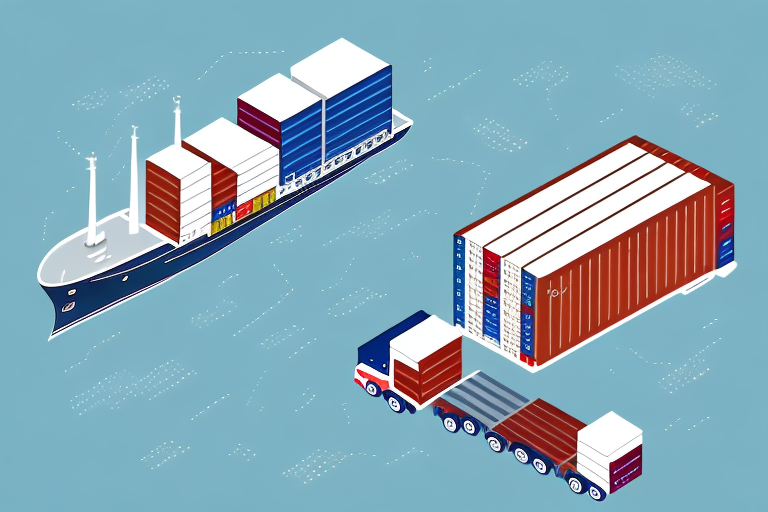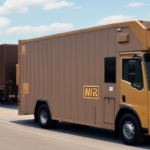Understanding Economy and Standard Shipping
When it comes to shipping products, choosing between economy and standard shipping methods is a pivotal decision for your business. Economy shipping offers cost-effective solutions with longer delivery times, while standard shipping provides faster delivery at a higher cost. Understanding the nuances of each option can help you make informed decisions that align with your business needs and customer expectations.
Pros and Cons of Economy Shipping
Cost Savings
One of the primary advantages of economy shipping is its affordability. This option is ideal for small businesses looking to minimize shipping expenses. By opting for economy shipping, businesses can allocate more resources to other critical areas such as marketing and product development.
Environmental Impact
Economy shipping is often more environmentally friendly compared to faster shipping methods. Utilizing ground transportation and optimizing delivery routes can reduce the carbon footprint associated with shipping, supporting sustainability initiatives.
Limited Tracking and Insurance
However, economy shipping typically offers limited tracking and insurance options. This can be a concern for businesses shipping valuable or fragile items, as there is a higher risk of loss or damage without comprehensive protection.
Pros and Cons of Standard Shipping
Faster Delivery
Standard shipping excels in providing quicker delivery times, usually ranging from one to five days. This speed enhances customer satisfaction, especially for businesses that prioritize timely deliveries.
Higher Costs
The main drawback of standard shipping is its higher cost. Businesses must balance the need for speed with budget constraints, particularly if shipping volumes are high.
Enhanced Tracking and Insurance
Standard shipping offers more robust tracking and insurance options, providing peace of mind for both the sender and the recipient. This feature is crucial for high-value shipments and ensures accountability throughout the shipping process.
Factors Affecting Shipping Costs
Distance
The distance a package travels significantly impacts shipping costs. Longer distances require more resources, thereby increasing expenses.
Package Dimensions and Weight
Both the size and weight of the package are critical factors. Heavier and larger packages incur higher shipping fees due to the additional space and resources required for transportation.
Shipping Provider and Service Type
Different shipping providers have varying pricing structures and service offerings. Selecting the right provider and service type (e.g., ground vs. air) can influence overall shipping costs.
Seasonal Demand
During peak seasons such as holidays, shipping costs may rise due to increased demand. Planning shipments ahead of high-demand periods can help mitigate these costs.
Choosing the Right Shipping Method for Your Business
Assessing Business Needs
Evaluate your business requirements, including delivery speed, cost constraints, and the nature of the products being shipped. This assessment will guide you in selecting the most appropriate shipping method.
Understanding Customer Expectations
Consider what your customers value most—whether it's affordability or quick delivery. Aligning your shipping strategy with customer preferences can enhance satisfaction and loyalty.
Tracking and Insurance Requirements
If your business handles high-value or sensitive items, opting for shipping methods that offer comprehensive tracking and insurance is essential to safeguard your shipments.
Tips for Saving on Shipping Costs
Bulk Shipping and Efficient Packaging
Shipping in bulk can lead to significant cost savings. Additionally, optimizing your packaging to reduce size and weight without compromising product safety can further lower expenses.
Compare Shipping Providers
Regularly compare rates and services from different shipping providers to find the best deals. Leveraging partnerships or volume discounts can also reduce costs.
Utilize Shipping Calculators and Flat-Rate Options
Shipping calculators help determine the most cost-effective shipping method based on package dimensions and weight. Flat-rate shipping options can offer predictable pricing for standard package sizes.
Common Mistakes and Best Practices
Avoiding Tracking Oversights
Always track your packages to monitor their progress and address any issues promptly. Implementing automated tracking notifications can enhance transparency and reliability.
Proper Packaging Techniques
Use sturdy packaging materials and appropriate cushioning to protect your products during transit. Proper packaging minimizes the risk of damage and returns, saving costs in the long run.
Meeting Delivery Deadlines
Align your shipping methods with your delivery commitments to maintain customer trust. Consistently meeting or exceeding delivery expectations fosters positive customer relationships.
Adapting to Changes in the Shipping Industry
Impact of Global Events
Global events like the COVID-19 pandemic have reshaped the shipping landscape, affecting delivery times and costs. Staying informed about industry changes enables businesses to adapt and maintain efficient shipping operations.
E-commerce Growth
The surge in e-commerce has increased the demand for reliable shipping services. Businesses must scale their shipping strategies to accommodate higher volumes and diverse customer needs.
Conclusion: Making the Right Shipping Decision for Your Business
Selecting the optimal shipping method is a critical decision that impacts both your operational efficiency and customer satisfaction. By carefully evaluating the factors outlined above and staying informed about industry trends, you can develop a shipping strategy that balances cost, speed, and reliability. Always choose a reputable shipping provider to ensure a seamless shipping experience for your business and your customers.




















